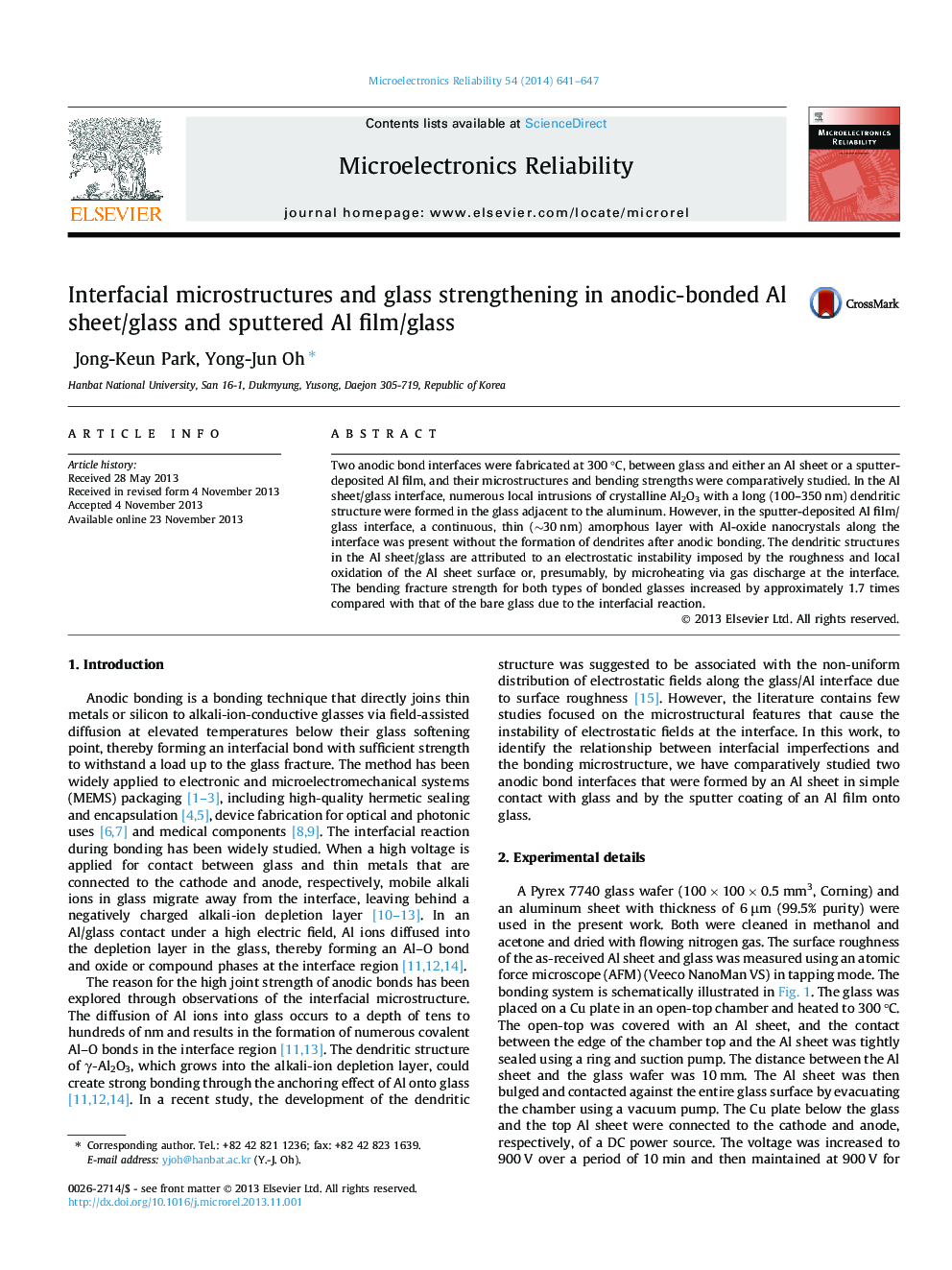| Article ID | Journal | Published Year | Pages | File Type |
|---|---|---|---|---|
| 548178 | Microelectronics Reliability | 2014 | 7 Pages |
•An Al sheet and a sputtered Al film were anodically bonded to glass.•The bond between the Al sheet/glass locally formed a dendritic alumina structure.•Sputtered Al film/glass with a conformal interface formed a thin composite interlayer.•Interfacial reactions during anodic bonding significantly strengthened the glass.
Two anodic bond interfaces were fabricated at 300 °C, between glass and either an Al sheet or a sputter-deposited Al film, and their microstructures and bending strengths were comparatively studied. In the Al sheet/glass interface, numerous local intrusions of crystalline Al2O3 with a long (100–350 nm) dendritic structure were formed in the glass adjacent to the aluminum. However, in the sputter-deposited Al film/glass interface, a continuous, thin (∼30 nm) amorphous layer with Al-oxide nanocrystals along the interface was present without the formation of dendrites after anodic bonding. The dendritic structures in the Al sheet/glass are attributed to an electrostatic instability imposed by the roughness and local oxidation of the Al sheet surface or, presumably, by microheating via gas discharge at the interface. The bending fracture strength for both types of bonded glasses increased by approximately 1.7 times compared with that of the bare glass due to the interfacial reaction.
